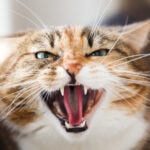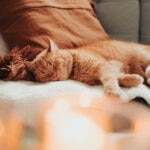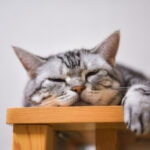The Best Cat Litter, According to Cat Parents
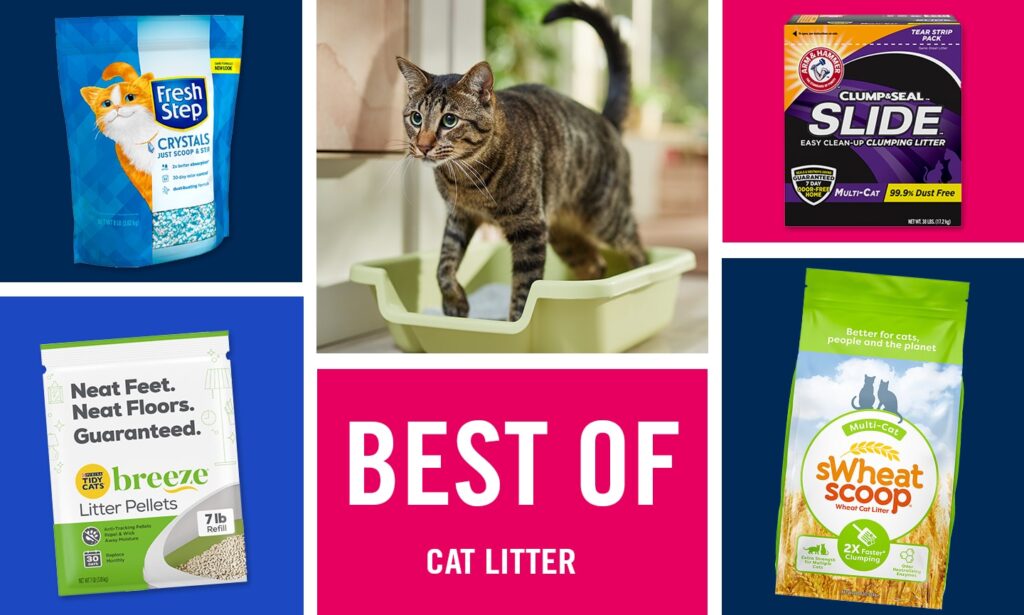
Photo by Sara Paul
As every cat parent knows, cleaning the litter box is one of the least rewarding aspects of the job. However, the right cat litter for your and your pet’s needs can make all the difference.
There are a wide range of litters available today, each offering unique benefits to cats and cat parents. Which one you choose can impact how easy it is to keep your space clean, your home smelling fresh and your cat happy.
Bathroom business is serious business, so there’s quite a bit to consider before selecting a litter. Read on for everything you need to know about the best cat litter on the market today, including expert tips and product picks from pet parents like you.
10 Best Cat Litters
Best Cat Litter Overall
World's Best Multi-Cat Unscented Clumping Corn Cat Litter, 28-lb bag
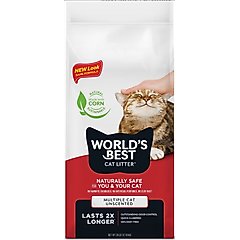
Best Cat Litter for Odor Control
Fresh Step Crystals Scented Non-Clumping Cat Litter, 8-lb bag
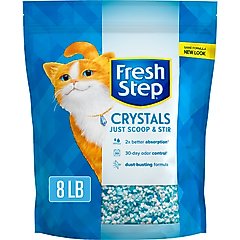
Best Clumping Cat Litter
Dr. Elsey's Ultra Unscented Clumping Clay Cat Litter, 40-lb bag
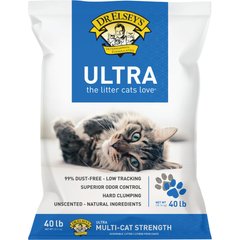
Best Dust-Free Cat Litter
Arm & Hammer Litter Slide Multi-Cat Scented Clumping Clay Cat Litter, 38-lb box
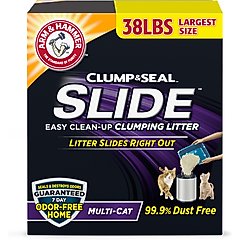
Best Flushable Cat Litter
sWheat Scoop Multi-Cat Natural Clumping Wheat Cat Litter, 14-lb bag
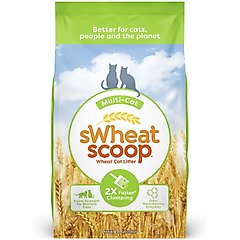
Best Litter for Kittens
Dr. Elsey's Kitten Attract Clumping Clay Cat Litter, 20-lb bag
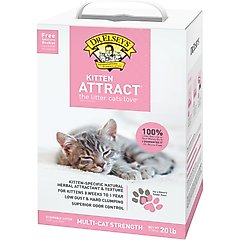
Best Non-Tracking Cat Litter
Tidy Cats Breeze Unscented Cat Litter Pellets, 7-lb bag
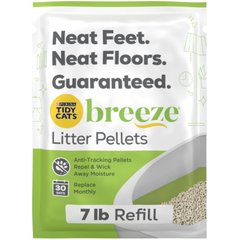
Best Natural Cat Litter
World's Best Comfort Care Unscented Clumping Corn Litter, 28-lb bag
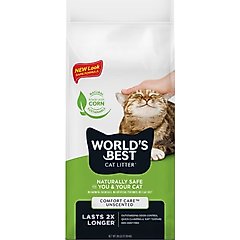
Best for Multiple Cat Households
Fresh Step Multi-Cat Extra Strength Scented Clumping Cat Litter, 25-lb
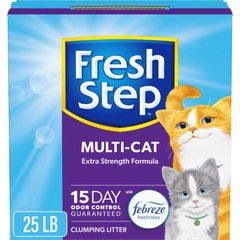
Best Budget Cat Litter
Frisco Multi-Cat Unscented Clumping Clay Cat Litter, 40-lb bag
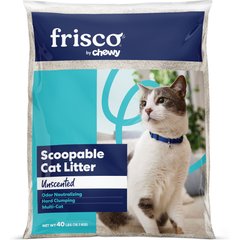
How to Find the Best Cat Litter
At first glance, the amount of cat litters available today can be overwhelming. Where to start? First, consider these important factors:
- Materials: Cat litter is made from a variety of materials—from clay to silica gel to corn—with each offering its own benefits and drawbacks (more on that below).
- Clumping vs. non-clumping: To clump or not to clump, that is the age-old question. While there is no correct answer here, many cats (and cat parents) have strong preferences.
- Your litter box: If you have an automatic litter box, it’s important to use the type of litter suggested by the manufacturer. Many automatic litter boxes can use standard clumping litters, while others require specific litters.
- Your number of pets: If multiple cats will be using the litter, you might consider a multi-cat formula, which has additional odor neutralizers.
- Your cat’s health: If your cat has certain health conditions, your veterinarian may advise you to use specific litters. For example, cats with respiratory issues may benefit from low-dust litters. Some even change color to indicate potential health problems.
- Your lifestyle: Are you able to transport a heavy clay litter, or do you need a more lightweight option? Is non-tracking litter (litter that doesn’t stick to your cat and travel out of the box with them) important to you? How sensitive are you to fragrance or lack of fragrance? While your cat’s preferences are important, your litter also needs to work for your household.
- Your disposable method: How do you plan to dispose of litter? If you plan to scoop and flush, it’s important to use a flushable variety that’s safe for your plumbing.
- Your veterinarian’s advice: Using the litter box is an important part of your cat’s day, so consult your veterinarian before making changes to your litter, and ask for trusted product recommendations.
Best Cat Litter Overall
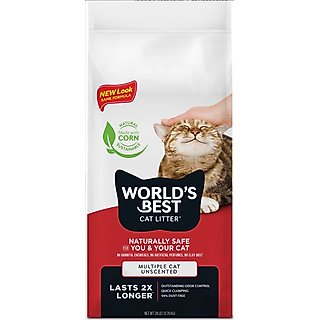
Made from whole-kernel corn, this all-natural lightweight litter does it all: clumps quickly; flushes safely through most septic systems; traps odors; and is virtually dust-free. Happy pet parents report that their boxes smell fresh, and many are impressed by how easy it is to scoop.
Best Cat Litter for Odor Control
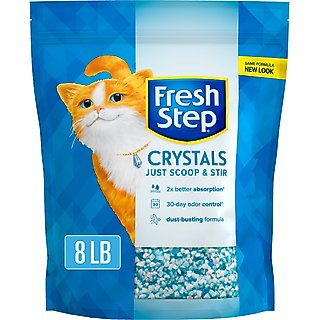
If unpleasant smells are a concern, this top-rated litter is made with odor-locking crystals that provide up to 30 days of freshness. In addition to superior odor control, reviewers rave that it is low-tracking, non-dusty and lightweight.
Best Clumping Cat Litter
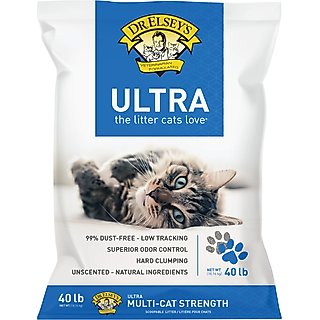
This fan-favorite litter controls odors without artificial fragrances, and creates extra-strong clumps that don’t break apart when scooping. Happy customers report that the quick-clumping granules keep boxes extra clean, and love how swiftly it traps and eliminates odors.
Best Dust-Free Cat Litter
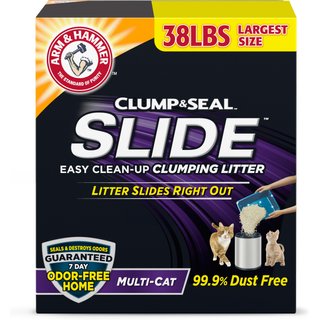
This highly rated litter from the cleaning pros at Arm & Hammer contains odor-absorbing baking soda, as well as moisture-activated microgranules that clump quickly and tightly, almost completely (99.9%) eliminating dust and preventing tracking. Reviewers repeatedly claim “it’s the best litter I ever tried,” and are impressed by how it controls smells and dust.
Best Flushable Cat Litter
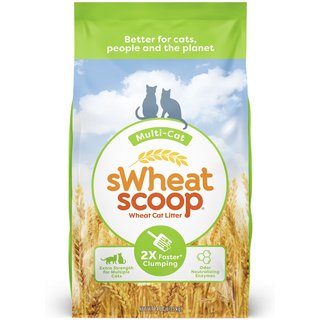
Flushing fans, look no further: This natural litter is made with wheat sourced from USA farms, and contains no dyes, perfumes or chemicals. Reviewers appreciate being able to immediately flush the mess away, and report that it’s quick-clumping and virtually dust-free.
Best Litter for Kittens
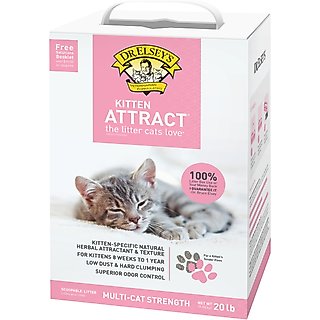
Designed specifically for litter-training kittens, this clay litter features a natural herbal attractant to help entice young cats to the box. Fans of the formula claim their kittens quickly used the litter, and some pet parents continue to purchase the litter after their cats reach adulthood, citing its soft, paw-friendly texture.
Best Non-Tracking Cat Litter
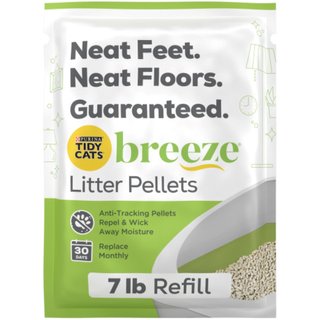
Designed specifically for use with the Tidy Cats Breeze litter box system, these innovative pellets don’t absorb urine; instead, they allow liquid to pass through to the ammonia-locking pad below, while poop remains up top. The verdict? Near flawless reviews, with customers excited about the lack of odors, dust and tracking.
Best Natural Cat Litter
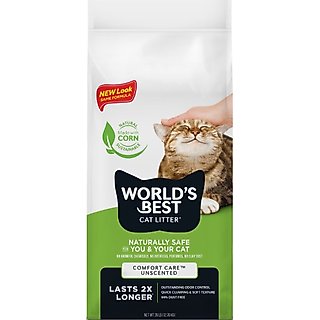
An effective alternative for environmentally conscious pet parents, this all-natural litter is made from renewable corn sourced from Midwest farmlands, and contains no chemicals or perfumes. Customers are impressed by the quick-clumping odor control, and appreciate that it is biodegradable and flushable.
Best for Multiple Cat Households
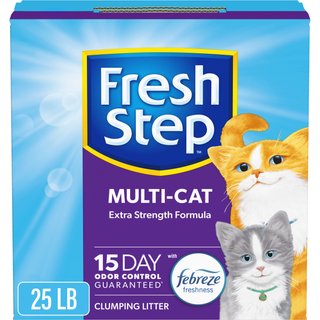
Ideal for those lucky enough to live in a multi-cat household, this popular litter is formulated with ammonia-blocking technology and releases a fresh Febreze scent with each step your cats take in the litter box. Reviewers call it a “gift,” and report that it controls odors even when you miss a day of scooping.
Best Budget Cat Litter
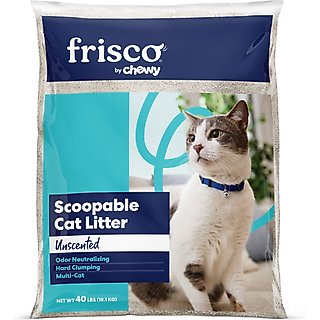
For the cost-conscious cat family, Frisco’s top-rated litter delivers premium results while remaining budget-friendly. Reviewers appreciate the price-per-pound of the 40-pound bag (under 45 cents!), and report that this easy-scooping litter clumps just as quickly and neatly as pricier options.
Types of Cat Litter
Cat litters are available in a wide range of materials and offer a number of features. Here, Joey Lusvardi, CCBC, a Minneapolis-based certified cat behavior consultant and founder of Class Act Cats, helps us break it down.
Clay
The most common types of cat litters are made from clay—specifically bentonite clay, which is highly absorbent, although other types of clay may be present depending on the type of litter. Clay litters can be clumping or non-clumping, and with a consistency reminiscent of sand or dirt, offer an alluring, natural texture.
“For most cats, a basic unscented clay clumping litter will work great, as it is easy to scoop; controls odor well if you scoop regularly; and it meets the preferences of most cats,” says Lusvardi.
Best for: most cats without special litter needs; budget-conscious pet parents
Silica Gel
Also known as crystal litter, silica gel litter is a mineral-based litter made from silica gel granules. The lightweight granules trap odors and absorb urine without clumping, and produce minimal dust. Some brands, such as PrettyLitter, change colors to help monitor the cat’s urine content.
While many cats happily use crystal litter, others may not like the texture. “Crystal litter tends to have sharp edges, and may not be very comfortable for cats to walk on,” Lusvardi says.
Best for: pet parents who prefer a lighter litter; cats with respiratory and urinary health concerns; households concerned about litter dust and tracking
Natural
Natural cat litters are made from sustainable, biodegradable materials including paper, corn, tofu, cedar, walnuts and grass. Natural litters rely on their fiber-heavy compositions to absorb urine.
Because natural cat litter is made with renewable materials, it’s one of the most eco-friendly options you can choose, says Lusvardi. “I often recommend clients try a grass litter if they are thinking of switching to a natural litter. It has qualities that are pretty close to a typical clay litter but is less dusty.”
Best for: ingredient-conscious and environmentally friendly pet parents; cats who do not like the texture of more traditional litters; cats who are sensitive to chemicals and fragrances
Multi-Cat
Multi-cat litters typically contain extra odor neutralizers and fragrances, making them effective at keeping households with multiple pets smelling fresh. Multi-cat litters can be made from a variety of materials, and many cats tolerate them. However, if your cat is sensitive to fragrance, these litters may not be appropriate.
“If your cat has a sensitivity, try to find as boring a litter as possible,” says Lusvardi. “Unscented litters are going to have fewer chemicals than scented litters.”
Best for: households with multiple cats; pet parents concerned about odors
Flushable
Flushable litter is made with 100% biodegradable ingredients, meaning that—unlike clay or silica litters—clumps and soiled portions can be flushed down the toilet. Not every toilet or septic tank can effectively manage flushable litter, though, so it’s important to research your system before selecting a litter.
Best for: pet parents who don’t want solid waste in the trash can
Clumping
Clumping cat litter is a popular variety of clay litter that is extra absorbent, causing the clay to form firm clumps when it comes into contact with liquid. A clumping formula makes it easy to scoop out urine, meaning the box smells fresher and has to be emptied less frequently.
While most pet parents who purchase clay litter would prefer the clumping variety, non-clumping can be better for some cats. “For long-haired or even some medium-haired cats, clumping litter may get stuck in their fur,” Lusvardi says. “This is incredibly uncomfortable, so they may prefer a non-clumping litter that won’t try to tag along after they use the litter box.”
Best for: pet parents who want to easily scoop and conserve litter; short-haired cats
Low-Tracking
While no litter is 100% non-tracking, low-tracking varieties are typically made from larger, heavier granules that are more likely to stay in the box instead of clinging to kitty’s feet or fur. Low-tracking litters are great for keeping the house tidy, but not all cats enjoy the texture.
Best for: pet parents concerned about stray litter
How to Litter Train a Cat or Kitten
Litter-training a cat or kitten doesn’t have to stink! Follow these easy steps for bathroom success:
- Choose the right equipment. Set your cat up for success with a shallow box that’s easy to get into, as well as a kitten-friendly litter, such as Dr. Elsey’s Kitten Attract Clumping Clay Cat Litter.
- Place the box in a safe space. Cats like privacy and easy access, so put the litter box in a low-traffic area that’s effortless to find.
- Show your cat the boxes. Almost immediately after bringing a new cat or kitten home, show them the litter box. As they get acclimated to their new home, continue to place them in the box a few times a day.
- Scoop the box daily for feces and urine. Cleaning litter boxes isn’t a glamorous chore, but it’s an important one. A dirty litter box is stressful to cats, and many will refuse to use it.
- Be patient. Your new pet may have a few accidents, and that’s OK. Never scold your cat; instead, calmly and thoroughly clean up the mess to avoid your cat going in the same place again.
For more litter-training tips, check out our comprehensive Chewtorial guide.
Cat Litter Troubleshooting
Sometimes, a perfectly trained cat will stop using the litter box. Some common reasons include:
- The box is different. Cats don’t like change. If you recently bought a new box, moved the box or switched to a new litter, your cat might not be comfortable with the new arrangement. If you must change your cat’s bathroom setup, try to make the changes subtle and gradual.
- The litter is dirty. Many cats won’t use a dirty box, even if it contains the greatest cat litter on the planet. Scoop your litter at least once a day, and replace it at least once a week.
- The box is too small. Your cat should be able to comfortably turn around in the litter box. If it’s the same box you purchased when your cat was a kitten, it might be time to buy something bigger.
- You have a kitty bully. In multi-cat households, one cat might “claim” the litter box. Make sure you have separate boxes for each cat, and place them in separate parts of the house.
- Stress. Cats can sense household stress, so a change in the family dynamic (such as a new baby or home renovations) can cause litter box issues. Try to stick to daily routines, and consult your veterinarian about ways to reduce your pet’s stress.
- Underlying medical issues. If your cat is sick, they may have trouble using the litter box. Always contact your veterinarian about any abrupt changes to litter box habits.
For more troubleshooting tips, check out our handy guide on solving cat litter problems.
How We Chose These Products
The right kitty litter can make all the difference for both cats and cat parents. That’s why we rounded up these top-selling, top-rated products, as chosen by satisfied Chewy customers. Backed by thousands of ratings and stellar cat litter reviews, these best-in-class litters are kitty-tested and pet-parent approved.
Talk to Your Veterinarian
The litter box is an important part of your cat’s routine and health, so before making changes, discuss them with your veterinarian. They can make suggestions about the best litter for your cat.
It’s also important to consult your veterinarian if you notice changes to your cat’s litter box habits, including accidents outside the box or straining to go. “The occasional lapse in litter-box usage may not be cause for concern, but recurrent or abrupt issues require immediate veterinary attention,” says Dr. Bethany Hsia, DVM, a Clovis, California-based veterinarian and co-founder of CodaPet.
Cat Litter: Next Steps
Cats bring immeasurable joy, comfort and companionship to our lives, enriching every corner of our homes—except, perhaps, the litter box corner. Fortunately, we’ve come a long way since messy, one-size-fits-all litters.
Next order of business? Finding the perfect litter box for your feline friend. Read our guide on everything you need to know about buying litter boxes, from the latest high-tech options to tried-and-true favorites.
Cat Litter FAQs
What is the least messy cat litter?
The least messy cat litters are clumping, low-tracking litters made from heavier granules, which are less likely to stick to a cat’s feet or fur. If dust is a concern, silica litters are virtually dust-free.
How often should you change cat litter?
Cats prefer clean boxes, so plan to scoop your box at least once a day (and twice when possible). Once a week, empty the litter pan completely; clean it with unscented dish soap; and refill with new litter.
Why did my cat stop using the litter box?
Cats may stop using the litter box for a variety of reasons, including a change to the litter box, litter or location; dirty litter; an uncomfortably small box; intimidation from another cat; stress; or an underlying health issue. If you notice a change in your cat’s litter box habits, consult your veterinarian.
Attributions
Expert input provided by Dr. Bethany Hsia, DVM, a Clovis, California-based veterinarian and co-founder of CodaPet, and Joey Lusvardi, CCBC, a Minneapolis-based certified cat behavior consultant and founder of Class Act Cats.

